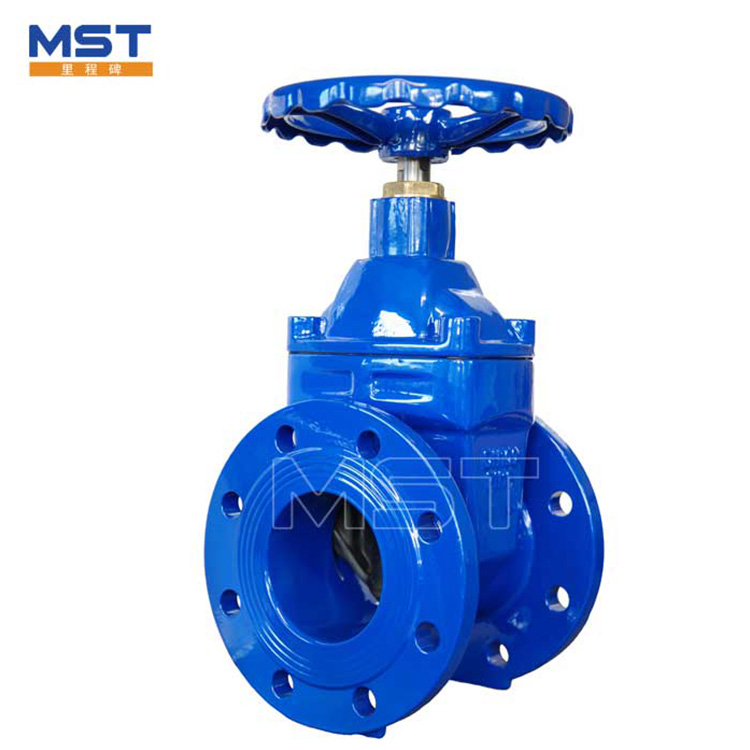Metal Seated Gate Valve: The Reliable Choice for Heavy-Duty Applications
2025-01-20
In industrial systems where fluid and gas flow need to be controlled precisely, valves play an essential role. Among the wide range of valve types available, metal-seated gate valves are recognized for their reliability, durability, and ability to handle high-pressure and high-temperature environments. These valves are critical components in various industries, from oil and gas to power plants and water treatment facilities, offering a long service life even under the most challenging conditions.
What Is a Metal Seated Gate Valve?
A metal-seated gate valve is a type of valve used to control the flow of fluids or gases within a pipeline. Unlike traditional gate valves, which use soft sealing materials like elastomers or plastics, metal-seated gate valves use metallic materials for both the valve seat and the gate. This design allows the valve to withstand higher pressures, extreme temperatures, and abrasive or corrosive fluids that would cause damage to softer seals.
The basic mechanism of a metal-seated gate valve consists of:
1. A Gate: This is the movable element of the valve, which moves up and down to either block or allow the flow of fluid through the valve.
2. A Seat: The stationary surface against which the gate seals when the valve is closed. In metal-seated valves, this seat is made of hardened metal, ensuring a strong, leak-proof seal under high stress.
3. A Bonnet: This covers and protects the internal parts of the valve and often houses the valve stem, which connects the actuator to the gate.
4. Stem and Actuator: The stem transmits the motion from the actuator to the gate, allowing it to open or close. Actuators may be manual, pneumatic, electric, or hydraulic, depending on the application.
The key differentiator of metal-seated gate valves is the metal-to-metal contact between the gate and the seat, which provides superior sealing in high-pressure and high-temperature environments compared to traditional soft-seated valves.
Applications of Metal Seated Gate Valves
Metal-seated gate valves are commonly found in high-pressure and high-temperature applications, particularly where there is a need for strong, durable, and long-lasting performance. Some common applications include:
1. Oil and Gas Industry
In the oil and gas sector, where pipelines transport crude oil, natural gas, and other hydrocarbons, metal-seated gate valves are used extensively to control the flow of these high-pressure fluids. They are particularly useful in the upstream, midstream, and downstream sectors, where safety, reliability, and minimal leakage are paramount. Metal-seated gate valves can handle the demanding conditions of offshore drilling and high-pressure pipeline systems.
2. Power Generation
In power plants, especially those involved in steam generation and nuclear power, metal-seated gate valves are used to control the flow of steam and other high-temperature fluids. These valves can withstand the extreme temperatures found in boiler systems and turbine inlets, ensuring safe and efficient operation of the plant. Their ability to resist thermal expansion and high pressure is crucial for the overall performance and safety of power generation systems.
3. Chemical Processing
Chemical plants often deal with aggressive and corrosive substances that require specialized valves for handling. Metal-seated gate valves provide a reliable solution for controlling the flow of hazardous chemicals, where other valves might degrade or leak over time. The abrasion resistance and chemical resistance of the metal seating allow the valve to perform efficiently in harsh environments.
4. Water and Wastewater Treatment
In water treatment plants, metal-seated gate valves are used to regulate the flow of water, sludge, and other liquids. Their ability to withstand the pressure and flow demands of large water systems, combined with their durability against wear, makes them ideal for controlling water supply lines, pumping stations, and treatment tanks.
5. Mining and Slurry Applications
Mining operations often involve the transport of slurries—mixtures of water and solid particles like coal, sand, or ore. Metal-seated gate valves excel in these environments because they can handle abrasive and particulate-laden fluids that would quickly erode soft-seated valves. They are commonly used in mining operations for controlling the flow of slurry in piping systems and conveyors.
Choosing the Right Metal Seated Gate Valve
When selecting a metal-seated gate valve, several factors need to be considered to ensure that it will perform optimally in your specific application. These factors include:
- Pressure and Temperature Ratings: Ensure the valve can handle the specific pressure and temperature conditions of your system.
- Material Compatibility: Choose a valve made from materials that are resistant to corrosion, erosion, and wear based on the fluids being transported.
- Size and Type of Actuation: Consider the size of the valve and whether it will be operated manually, or if automation (e.g., pneumatic or electric actuators) is needed.
- Seal and Seat Design: Check the seal and seat design to ensure it provides the leak-proof performance required for your application.
Metal-seated gate valves offer unmatched durability, reliability, and performance in high-pressure, high-temperature, and abrasive environments. Their ability to maintain a leak-proof seal under extreme conditions makes them indispensable in industries such as oil and gas, power generation, chemical processing, and water treatment. While they may require a higher initial investment compared to soft-seated alternatives, their long service life, minimal maintenance requirements, and overall performance make them an excellent choice for demanding industrial processes.



